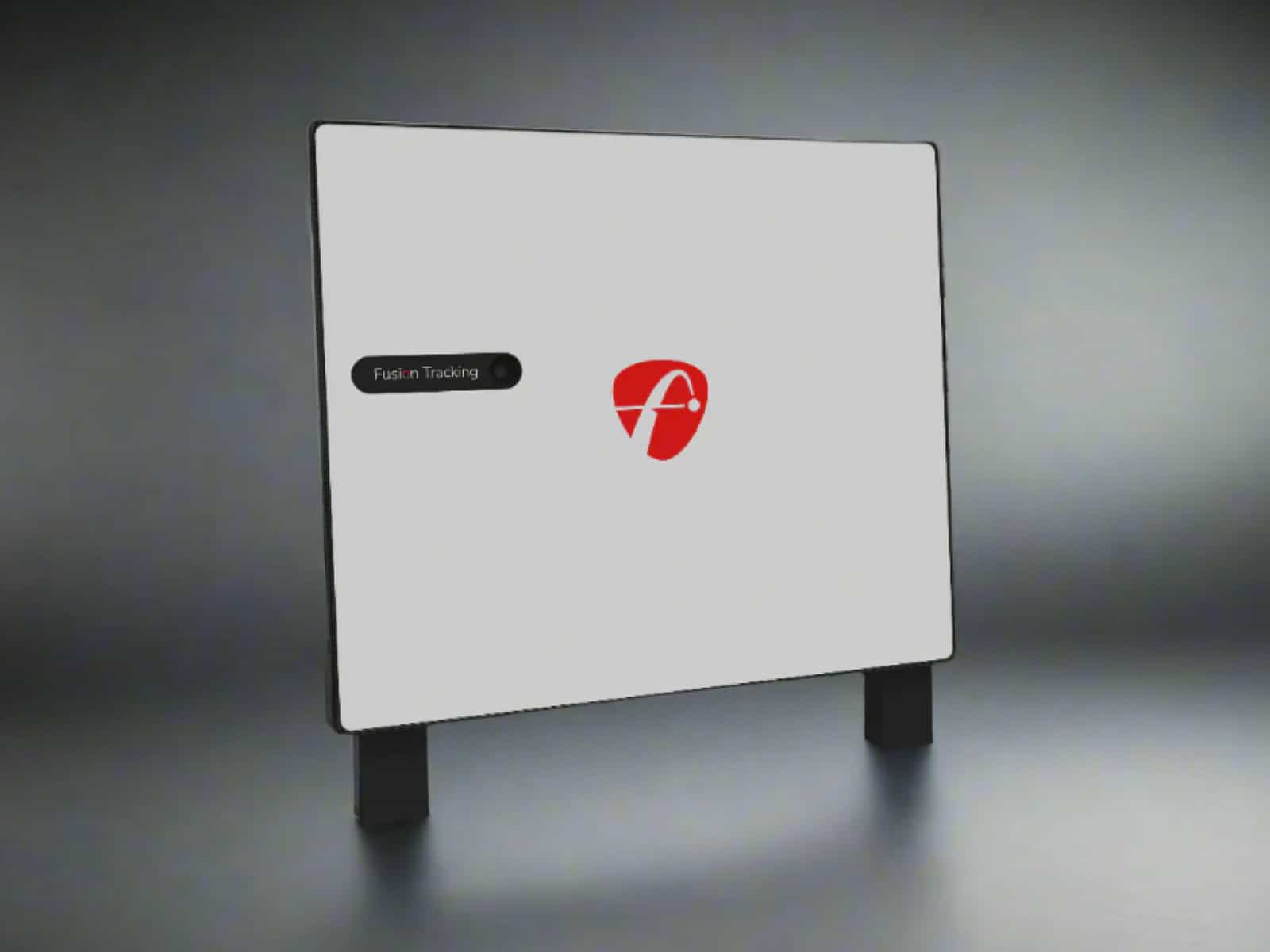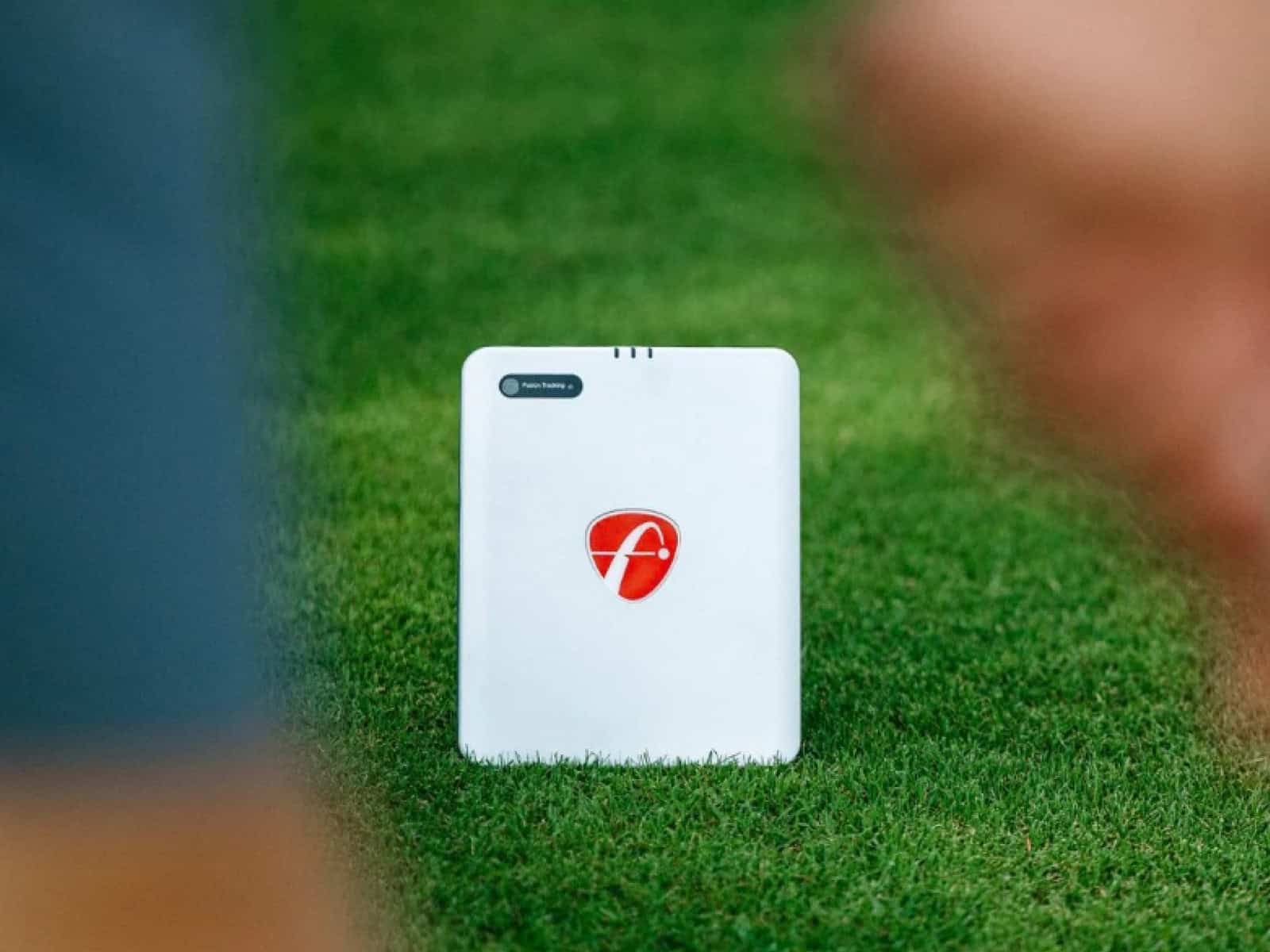The FlightScope X3C represents the latest evolution in premium launch monitor technology, promising enhanced accuracy and expanded functionality for golfers of all levels.
As the successor to FlightScope’s acclaimed X3 model, the X3C enters a competitive landscape dominated by high-end devices from manufacturers like TrackMan and Foresight. Positioned as a professional-grade tool with consumer accessibility, this radar-based launch monitor brings advanced Doppler tracking technology to professionals and dedicated amateurs.
Our hands-on testing evaluates the X3C’s performance across diverse environments, examining its accuracy, ease of use, software ecosystem, and value proposition to help you determine if this cutting-edge launch monitor deserves a place in your golf technology arsenal.
The FlightScope X3C Technical Specifications
The X3C embodies the perfect balance between professional-grade capabilities and practical usability, evident in its thoughtfully engineered specifications:
- Dimensions and Weight: Measuring 7.5″ × 5.0″ × 1.5″ and weighing just 6 lbs 10 oz, the X3C offers remarkable portability without compromising durability or performance.
- Battery Performance: Equipped with a high-capacity lithium-ion battery, the X3C delivers approximately 6 hours of continuous operation. The quick-charge technology enables an 80% charge in under 90 minutes via USB-C connection.
- Connectivity Options: Bluetooth 5.0, dual-band Wi-Fi (2.4GHz and 5GHz), USB-C port for wired connections and charging, internal GPS for location tracking and course mapping.
- Device Compatibility: FlightScope has ensured broad compatibility across iOS devices (iPhone 8 or newer, iPad 6th generation or newer), Android devices (Android 9.0 or higher), Windows PCs (Windows 10 or later), macOS (macOS Catalina or newer)
- Storage and Processing: The X3C incorporates advanced data handling capabilities with 64GB internal storage for session recordings and user profiles, dedicated graphics processing for real-time 3D rendering, multi-core processor optimized for simultaneous data streams, and cloud synchronization for easy data access across devices
These technical specifications establish the X3C as a professional-caliber launch monitor designed to deliver consistent performance across diverse environments while maintaining the versatility expected from modern golf technology tools.
First Impressions and Unboxing
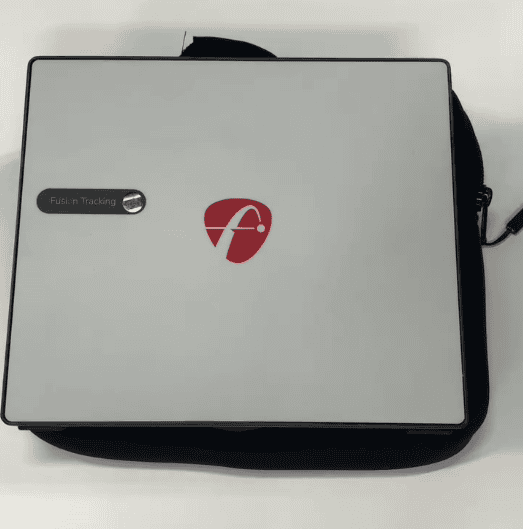
The FlightScope X3C arrives in a professional-grade package that reflects its premium status in the launch monitor market. Upon opening, you’ll find a well-designed carrying case that houses the flagship device and all its accompanying accessories.
Inside the package, you’ll discover:
- The X3C launch monitor unit with its distinctive aerospace carbon fiber construction
- Metal alignment stick with reflective markers for calibration
- Charging adapter and USB-C cable
- Quick-start guide and warranty information
- Microfiber cleaning cloth
- Calibration certificate
- Metal target alignment plate
- Set of ball markers for specialized tracking scenarios
The presentation is methodical and organized, with each component securely placed in its dedicated compartment within the case, protecting the sophisticated technology during transport between sessions.
Build Quality and Design
The X3C immediately stands out with its revolutionary carbon fiber construction—making it the world’s first carbon fiber radar launch monitor. This aerospace-grade material provides exceptional durability while significantly reducing weight compared to previous models, enhancing portability without sacrificing robustness.
The device features:
- Lightweight yet extraordinarily durable carbon fiber housing
- Auto-leveling feet for quick setup on uneven surfaces
- Integrated hydraulic kickstand for perfect positioning
- Weather-resistant construction suitable for outdoor use
- Precision-engineered components handmade to aerospace standards
The carbon fiber shell isn’t just a premium aesthetic choice—it represents a functional advancement that makes the device more portable for teaching professionals and serious golfers who need to transport their equipment frequently.
Setup and Ease of Use
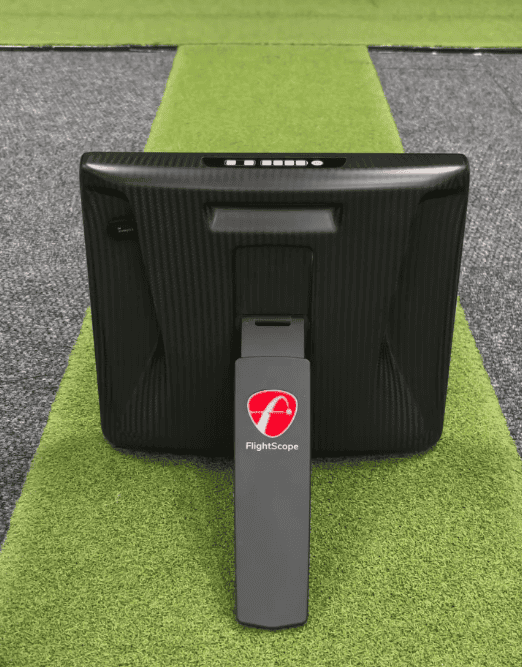
Setting up the FlightScope X3C is remarkably straightforward, despite its sophisticated technology. The process has been streamlined with automation features that reduce setup time significantly.
The setup involves positioning the X3C behind your hitting area at the recommended 8-14 feet for full shots, deploying the integrated hydraulic kickstand and allowing the auto-leveling feet to adjust automatically to the surface. This auto-leveling feature is a notable upgrade that eliminates manual adjustments. After powering on the device, you simply connect to your preferred device via Bluetooth or Wi-Fi.
Outdoor setup typically takes 3-5 minutes, while indoor setup may require additional consideration for ceiling height and room dimensions.
Software installation requires only downloading the FlightScope app from the App Store (iOS) or Google Play Store (Android), or companion software for PC users. The apps recognize the X3C automatically with a simple pairing process that doesn’t require manual code entry.
User Interface
The X3C’s interface represents a significant advancement in usability while maintaining depth for professionals. Primary interaction occurs through the companion app rather than on the device itself, featuring a clean design with intuitive navigation, customizable dashboard layouts and color-coded data visualization for immediate feedback.
The interface includes one-touch recording for video analysis with data overlay and quick toggles between full swing, chipping and putting analysis modes. Navigation follows a logical hierarchy with primary functions accessible from the home screen and detailed settings in clearly labeled submenus.
Extensive customization options allow you to select which data parameters appear on the main display, set target values, configure automatic video recording triggers, and save multiple user profiles with individual preferences.
The learning curve for basic functionality is short, with most users collecting meaningful data within minutes, though mastering advanced features like the Environmental Optimizer requires some time investment.
Key Technology and Features
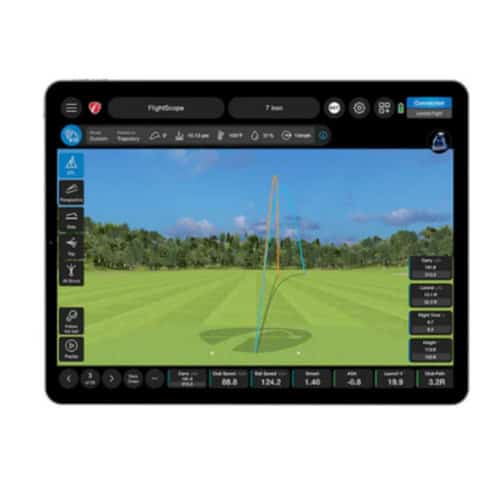
At the heart of the FlightScope X3C lies its revolutionary Fusion Tracking Technology—a sophisticated integration of 3D Doppler radar with synchronized high-speed image processing. This dual measurement approach provides unprecedented accuracy for ball and club data capture.
The 3D Doppler radar component emits microwave signals that bounce off the golf ball and club, measuring velocity, acceleration and directional vectors with exceptional precision. The X3C captures the complete trajectory from impact to landing, even in challenging lighting conditions or when the ball travels out of visual range.
Complementing the radar, the image processing component analyzes high-speed visual data to enhance tracking accuracy at impact. This synchronization between radar and optical tracking creates a verification system that eliminates limitations inherent to either technology used independently.
Data Parameters Measured
The FlightScope X3C captures over 50 data parameters, providing comprehensive insights into every aspect of the golf swing and ball flight. This extensive data collection spans full swing, chipping and putting analysis—offering complete performance assessment across all aspects of the game.
For full swings, the X3C measures critical ball data, including launch angle, ball speed, spin rates, and distances, alongside comprehensive club data such as head speed, attack angle, club path, face angle, and dynamic loft.
The Face Impact Location feature displays the exact point of contact on the clubface with heat mapping and visual overlays, providing immediate feedback on strike consistency. For wedge play, the system captures D-plane data and bounce count, while putting analysis measures ball speed profiles, launch conditions and skid distance.
Software Capabilities
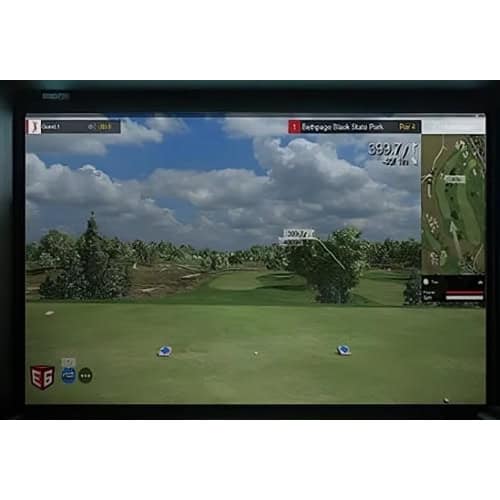
The FlightScope X3C’s hardware excellence is matched by its comprehensive software ecosystem across iOS, Android and PC platforms. The core Practice App offers trajectory customization, Apple Watch integration and seamless video-data synchronization, providing intuitive access to the X3C’s extensive measurement capabilities.
For iOS users, specialized tools like FlightScope Tracer and Trajectory Optimizer visualize shot shape and allow adjustments for different conditions.
Notably, the X3C includes no subscription requirements or annual fees—a significant advantage over competitors like TrackMan. All software updates and feature additions are included with purchase, enhancing long-term value. The E6 Connect integration transforms the X3C from a practice tool into an engaging game improvement platform with realistic gameplay.
Performance Testing
The Fusion Tracking Technology consistently delivered precise measurements with ball speed variance under 0.5 mph and launch angle accuracy within 0.3 degrees compared to reference tools. Even challenging metrics like spin rates showed remarkable precision, with variations under 150 RPM on well-struck shots. Complex ball flights—draws, fades, high lofts, and low trajectories—were captured with impressive fidelity.
In outdoor settings, the X3C tracked complete ball trajectories from impact to landing across various lighting conditions with no performance degradation. Indoor performance was equally impressive, requiring just 8 feet of ball flight to capture accurate launch parameters. The unit performed optimally with a 9-foot ceiling height, though acceptable results were achieved in 8-foot spaces with minor positioning adjustments.
Battery life consistently reached 5-6 hours of continuous operation from a full charge, with a 30-minute quick charge providing approximately 1 hour of use. Connectivity remained rock-solid throughout testing, with Bluetooth connections stable up to 40 feet and Wi-Fi extending the range beyond 100 feet with a clear line of sight. Data transfer also occurred instantaneously between impact and display.
The multicam functionality successfully synchronized up to three camera feeds with launch data, maintaining perfect timing alignment between visual and numerical feedback.
The power management features worked efficiently, with automatic sleep mode engaging after 10 minutes of inactivity while wake-up was nearly instantaneous, requiring no recalibration.
Advanced Features
The FlightScope X3C’s Skills module transforms practice with structured protocols that benchmark performance across various aspects of the game. These customizable challenges measure distance control, shot dispersion and consistency.
The system includes PGA/LPGA-inspired challenges for distance, control and speed training, introducing professional standards through gamified elements. Performance metrics are stored for session-to-session comparison, providing tangible evidence of improvement.
Practice organization tools categorize sessions by focus area, course preparation or development goals, creating a progressive improvement pathway that connects individual sessions to long-term objectives.
Course Simulation

The X3C includes access to 12 premium courses via E6 Connect software for iOS and PC with no subscription fees—a significant advantage over competitors requiring ongoing payments. The simulation balances visual fidelity with accurate physics, creating realistic shot responses that correlate directly with measured swing data.
The Environmental Optimizer enhances realism by simulating specific altitude, temperature, wind and humidity. Multiplayer support includes various competitive formats with detailed performance analytics that identify patterns in course management and highlight areas for strategic improvement.
Video Analysis Integration
The X3C’s automatic recording function with data overlay integrates visual feedback with performance metrics for comprehensive learning.
Multicam functionality supports up to three simultaneous camera angles with perfect timing alignment to impact data. Drawing tools and voiceover capabilities allow coaches to annotate swing positions, highlight movement patterns and provide verbal guidance linked to visual and data components.
The face impact location visualization displays the exact contact point on the clubface with heat mapping overlays, creating direct connections between feeling, swing mechanics and impact conditions to accelerate the refinement of consistent strike patterns.
Comparison with Competitors
The X3C represents a significant evolution from the X3, introducing substantial upgrades while maintaining FlightScope’s core technology. The most visible difference is the revolutionary carbon fiber construction, replacing aluminum to create a lighter yet equally durable unit that enhances portability for professionals on the go.
The X3C retails at $13,500 (discounted from $14,995), representing a premium over the X3. However, FlightScope’s trade-in program offers up to $4,000 off when exchanging older models, substantially offsetting the upgrade cost for existing customers.
FlightScope X3C vs. Top Competitors
In accuracy testing, the X3C’s Fusion Tracking technology delivers precision comparable to TrackMan across most essential metrics, with only slight differences in specific measurements like spin axis calculations under extreme conditions.
A crucial differentiator is the X3C’s no-subscription pricing model. Unlike TrackMan’s annual fees that can reach thousands of dollars, the X3C requires no recurring payments for full functionality, significantly enhancing long-term value for independent professionals and budget-conscious facilities.
Compared to Foresight’s camera-based systems, the X3C offers superior outdoor performance with complete ball flight tracking from impact to landing. This provides comprehensive performance data that camera-only systems cannot match.
Professional and Consumer Use Cases
The following are ideal use scenarios for Flightscope’s state-of-the-art launch monitor:
Teaching Applications

For golf instructors, the FlightScope X3C transforms lessons through comprehensive data visualization across 50+ parameters. The multicam function synchronizes three camera angles with impact data, while automatic video recording with data overlay creates integrated learning experiences. Cloud-based student management tracks progress over time, and remote coaching extends instructor reach through asynchronous analysis of student-captured practice sessions.
Fitting Solutions
The X3C delivers professional-grade fitting through precise tracking of equipment performance differences. Detailed club path, face angle and attack angle measurements reveal shaft influence on delivery position, while ball fitting analysis examines compression, spin rates and launch conditions across models. The system integrates seamlessly with major industry platforms without requiring separate fitting subscriptions.
Tournament Applications
The portable carbon fiber design suits tournament settings with streamlined player registration and automatic data capture eliminating manual scoring. Multi-player management supports various formats with real-time leaderboard updates, while data visualization tools enhance broadcast presentations with insights not visible to the naked eye.
Home Setup Considerations
For home users, the X3C requires minimal space—functioning effectively with 8-foot ceilings and just 8 feet of ball flight for accurate data capture. Optimal installation includes a level hitting surface, preferably a quality golf mat, and adequate lighting. Protective netting is recommended, with the unit positioned safely behind the hitting area to prevent damage from mishit shots.
Driving Range Implementation
The X3C’s portability shines at driving ranges, with the lightweight carbon fiber construction enabling quick transitions between practice locations. The weather-resistant design withstands outdoor conditions, though additional protection is advisable during heavy rain. The (up to) 6-hour battery life supports extended sessions, while the secure carrying case provides theft protection in public settings when stepping away temporarily.
Where to Buy?
We recommend getting the X3C from reputable retailers; here are our top suggestions:
The device currently retails for a little under $15,000, with most online retailers providing financing options with very low interest rates to help spread the investment over a longer period.
Warranty and Support Plans
The X3C includes a standard 12-month warranty covering manufacturing defects and performance issues, with repair or replacement through FlightScope’s service centers. Extended warranty options expand coverage by 1-3 additional years for $750-1,500, providing valuable protection for professionals whose operations depend on the device.
Technical support includes phone support during business hours, live chat and a comprehensive online knowledge base. Outside warranty coverage, FlightScope maintains a component-level repair approach where possible, avoiding complete unit replacement for isolated issues, with replacement discounts often available for catastrophic damage.
Frequently Asked Questions
The following are common questions asked about Flightscope’s newest flagship launch monitor. Out team provided answers to help you know more about the unit.
Is the FlightScope X3C accurate for indoor use?
Yes, the X3C delivers good indoor accuracy despite being primarily marketed as an outdoor device. The Fusion Tracking Technology requires just 8 feet of ball travel to capture reliable data. For optimal results, maintain a 9-foot ceiling height.
How does the X3C compare to TrackMan in terms of accuracy?
In direct testing, the X3C performs remarkably close to TrackMan across most measurements. Ball speed variance typically falls within 0.5 mph, while launch angle differences rarely exceed 0.3 degrees. Spin measurements show slightly more variance (around 150 RPM) but remain within acceptable ranges for professional applications.
What’s the minimum space required for proper use?
Indoors, the X3C needs at least 8 feet between the hitting position and the impact screen, with the unit positioned 6-8 feet behind the hitting area. An 8-foot minimum ceiling height is necessary, though 9+ feet is recommended for driver shots. The total space requirement is approximately 16×10 feet.
Can the FlightScope X3C be used for club fitting?
Absolutely. The X3C excels as a comprehensive fitting solution, measuring all critical parameters, including attack angle, club path, face angle, dynamic loft, and impact location. Its simultaneous tracking of ball and club data creates clear cause-effect relationships between delivery conditions and resulting ball flight.
Is a subscription required to use all features?
No. The X3C includes complete functionality with the initial purchase price, requiring no additional subscriptions or ongoing fees—a significant advantage over competitors like TrackMan. All software updates, cloud storage and feature additions are included.
Final Thoughts
After extensive testing, the FlightScope X3C proves its premium status in the launch monitor market. The revolutionary carbon fiber construction significantly enhances portability without compromising durability, while delivering accuracy that rivals more expensive systems.
The X3C excels in both indoor and outdoor environments, eliminating the need for separate systems—a substantial advantage for professionals working in multiple settings. Its comprehensive data capture, video analysis tools and no-subscription model create exceptional long-term value compared to competitors requiring annual fees.
While improvements over the original X3 are primarily evolutionary rather than revolutionary—mainly the lighter carbon fiber construction, improved kickstand, auto-leveling feet, and enhanced short game analytics—these refinements meaningfully improve the user experience.
If you’re still on the fence about whether the X3C or its predecessor is right for you, we’ve broken down the full feature set, pricing differences, and performance metrics in our side-by-side comparison of flightscope x3 vs x3c to help you make a more informed decision.
At almost $15,000, the X3C represents a significant investment, but for teaching professionals, club fitters and serious players seeking versatile, subscription-free performance, it delivers outstanding value that justifies its price.


